Bangkok's Cultural Odyssey: A Temple Trek
Embark on a captivating journey through Bangkok's rich heritage on this free walking tour, exploring majestic temples and historical landmarks.
Time
3 Hours
Stops
8 Places
Distance
4.4 km
Wat Pho (Temple of the Reclining Buddha)
Begin your journey at Wat Pho, one of Bangkok's oldest and largest temples, famous for its giant reclining Buddha statue and exquisite Thai massage school.
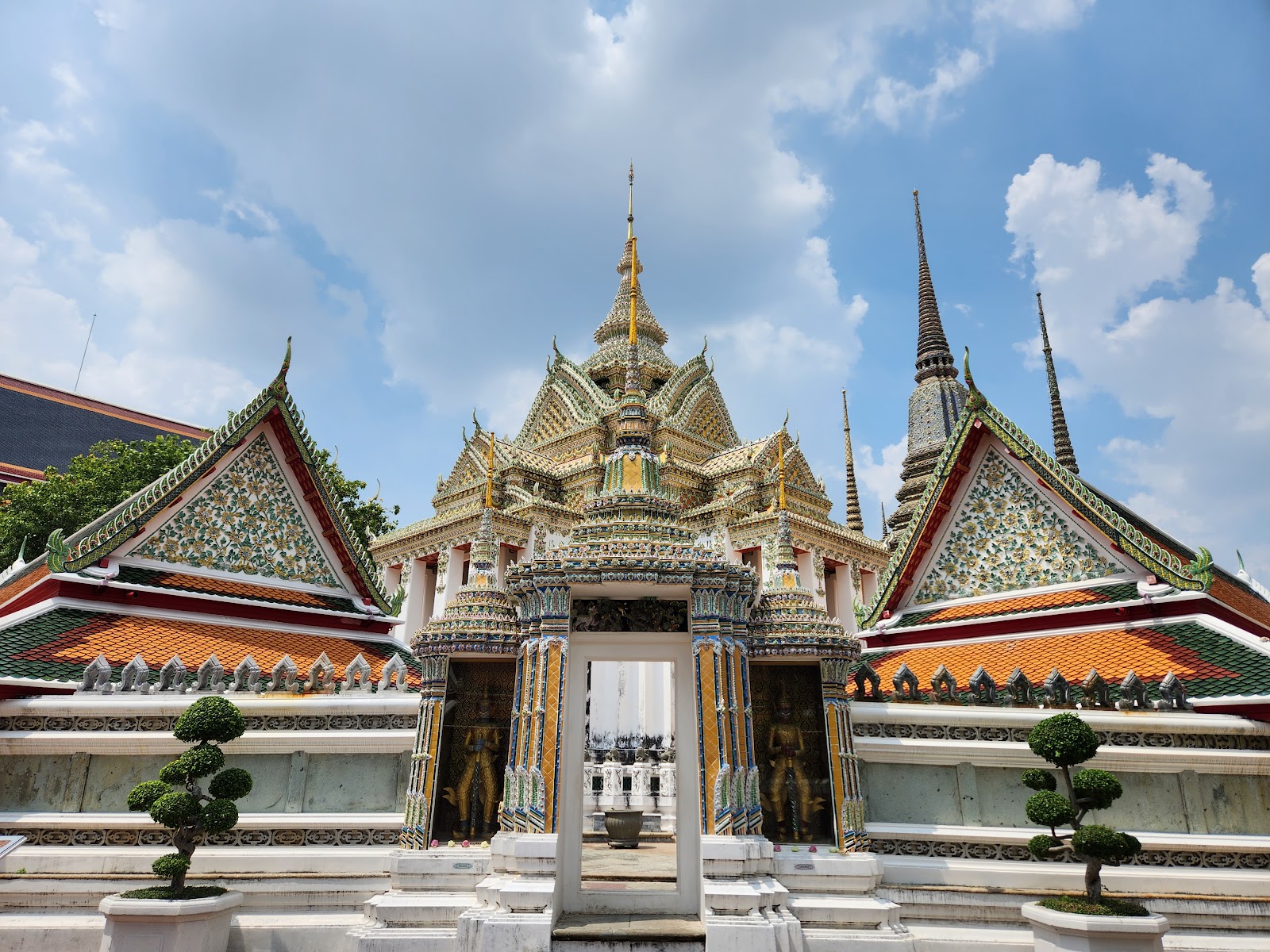
Wat Pho (Temple of the Reclining Buddha) (Source: Google Maps)
Wat Pho, one of Bangkok's oldest and largest temples, is renowned for its massive reclining Buddha statue, which measures 46 meters long and is covered in gold leaf. This temple, founded in the 16th century, is also the birthplace of traditional Thai massage, featuring a dedicated school that continues to train practitioners today. The temple complex boasts over 1,000 Buddha images, intricately decorated chedis, and beautiful murals that depict the life of the Buddha. As a center of learning, Wat Pho holds significant cultural importance, offering visitors a glimpse into Thailand's spiritual and artistic heritage.
Grand Palace
Just a short walk away, the Grand Palace is a must-see historical landmark, once the official residence of the Kings of Siam, showcasing intricate architecture and cultural heritage.
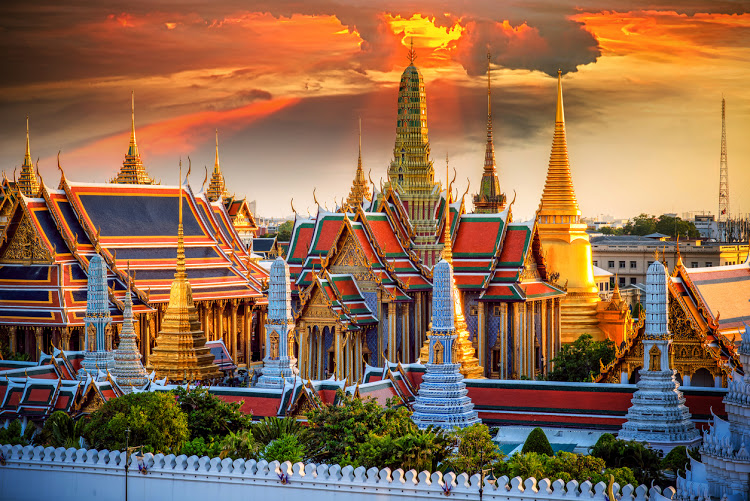
Grand Palace (Source: Google Maps)
The Grand Palace is an architectural marvel that served as the official residence of the Kings of Siam for over 150 years. Built in 1782, the complex showcases stunning Thai architecture, adorned with intricate details and vibrant colors. The palace is home to several important buildings, including the Emerald Buddha Temple, which houses the revered Emerald Buddha statue, a symbol of Thai royalty and spirituality. The Grand Palace’s design reflects the grandeur of the Chakri dynasty, combining traditional Thai elements with influences from European architecture. It remains a vital part of Thailand's cultural identity and a must-visit for anyone exploring Bangkok.
Wat Phra Kaew (Temple of the Emerald Buddha)
Located within the Grand Palace complex, Wat Phra Kaew is home to the revered Emerald Buddha, an essential icon of Thai spirituality.
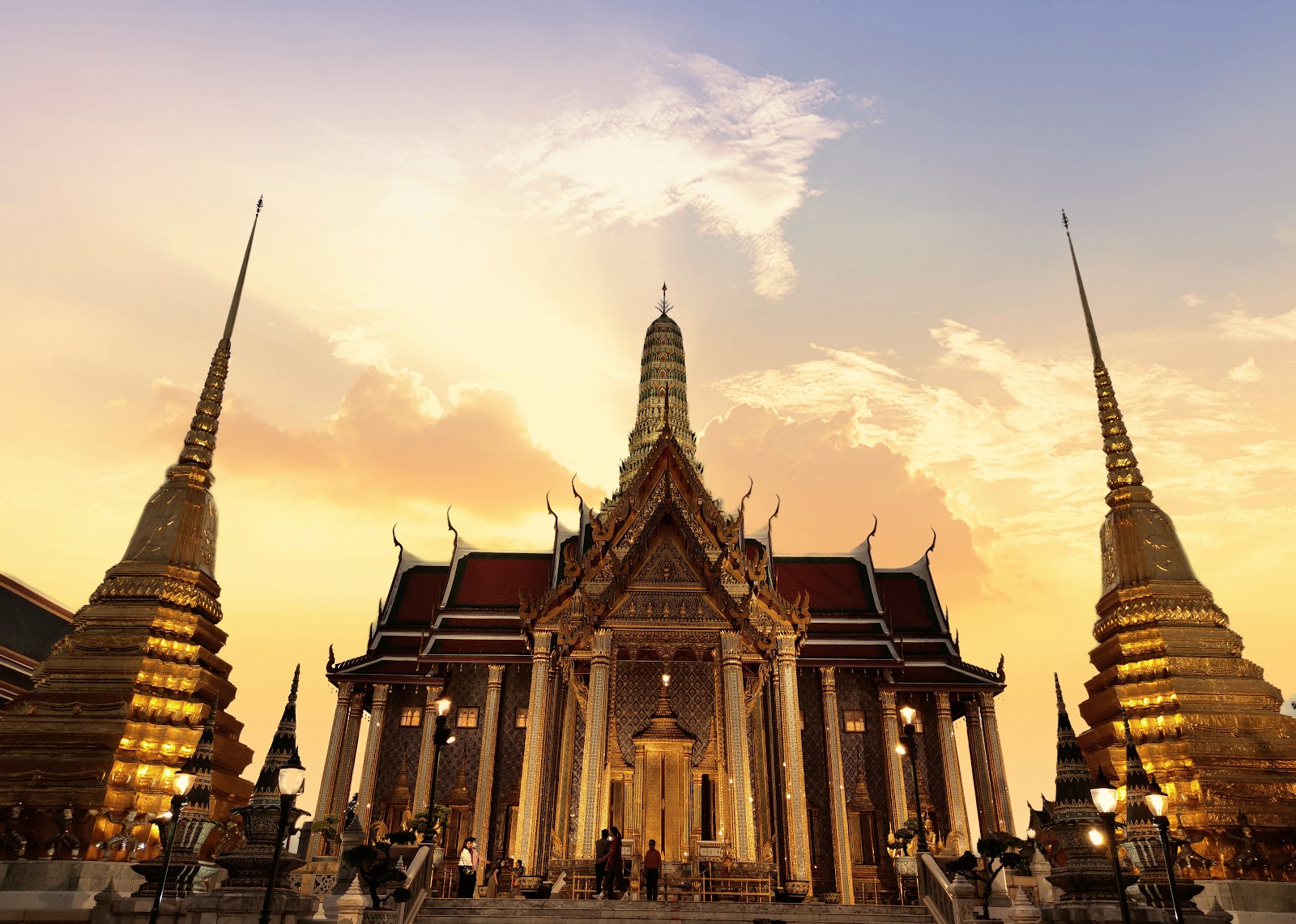
Wat Phra Kaew (Temple of the Emerald Buddha) (Source: Google Maps)
Wat Phra Kaew, located within the Grand Palace complex, is regarded as Thailand's most sacred temple. It houses the Emerald Buddha, a revered statue carved from a single block of jade, which is considered the protector of the Thai nation. The temple's exquisite architecture features intricate murals, gilded decorations, and stunning mosaics that reflect the artistry of Thai craftsmanship. The Emerald Buddha is dressed in seasonal attire, which is changed by the king to mark the changing of the seasons, emphasizing its symbolic significance. Wat Phra Kaew plays a crucial role in Thai spirituality and royal ceremonies, making it a cornerstone of Thailand's cultural heritage.
Sanam Luang
Head to Sanam Luang, a historic open field and public square that hosts important royal and religious ceremonies, offering a glimpse into Thai traditions.
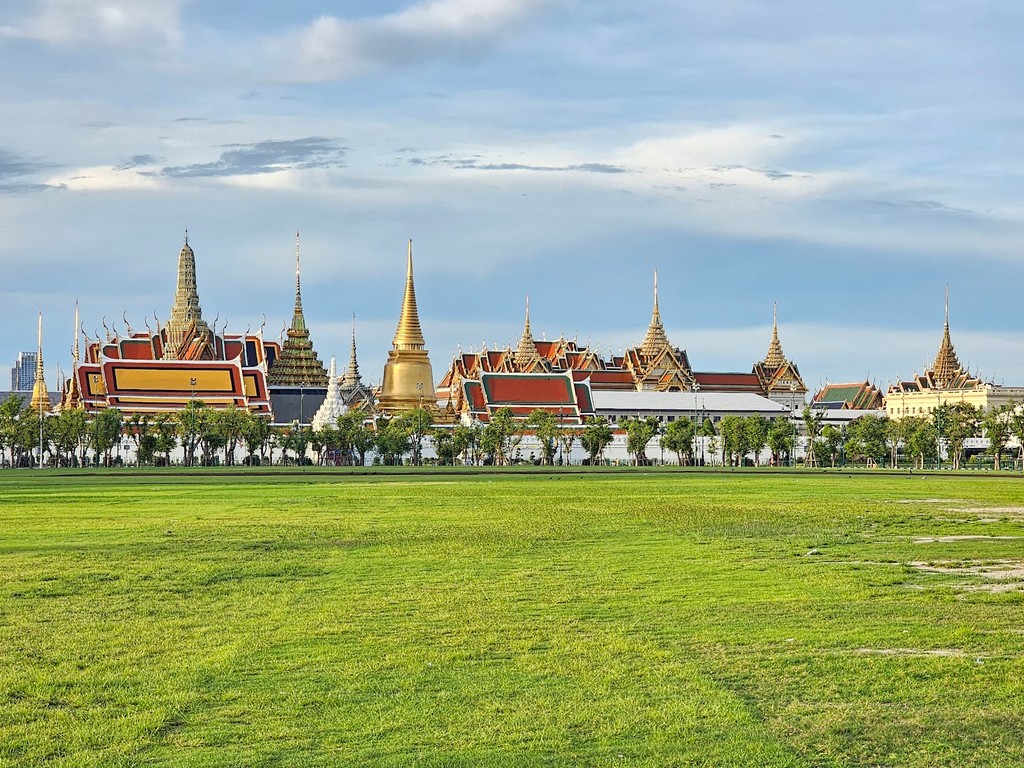
Sanam Luang (Source: Google Maps)
Sanam Luang, a historic public square located adjacent to the Grand Palace, has been a focal point for royal and religious ceremonies for centuries. This vast open field is often used for important events, including royal funerals and celebrations. The area is surrounded by beautiful trees and features a serene atmosphere, inviting visitors to reflect on its historical significance. Sanam Luang is deeply intertwined with Thai culture, serving as a gathering place for the public during important national events. Its historical roots and cultural importance make it a key landmark in Bangkok, offering insights into the traditions and values of the Thai people.
Wat Ratchabophit
Continue to Wat Ratchabophit, known for its unique blend of traditional Thai and European architectural styles, reflecting the vision of King Rama V.
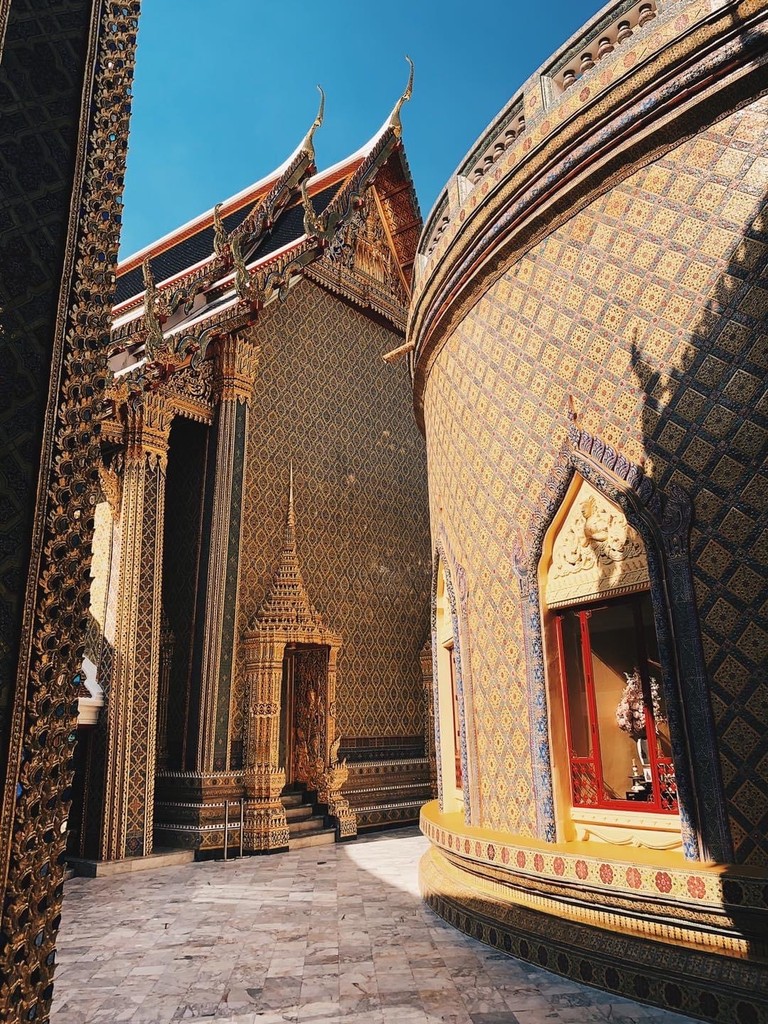
Wat Ratchabophit (Source: Google Maps)
Wat Ratchabophit is a unique temple that harmoniously blends traditional Thai and European architectural styles, reflecting the vision of King Rama V, who commissioned its construction in the late 19th century. The temple is known for its distinctive chedi, which features a beautiful blue and gold exterior, symbolizing the fusion of cultures. Inside, visitors can find intricate murals depicting the life of the Buddha and various Buddhist teachings. The temple is also notable for its serene atmosphere and tranquil gardens, making it a peaceful retreat for both locals and tourists. Wat Ratchabophit's architectural innovation and cultural significance highlight the rich history of Bangkok.
Wat Suthat
Just a short stroll away, Wat Suthat is famous for its stunning frescoes and the iconic Giant Swing located in front of the temple.
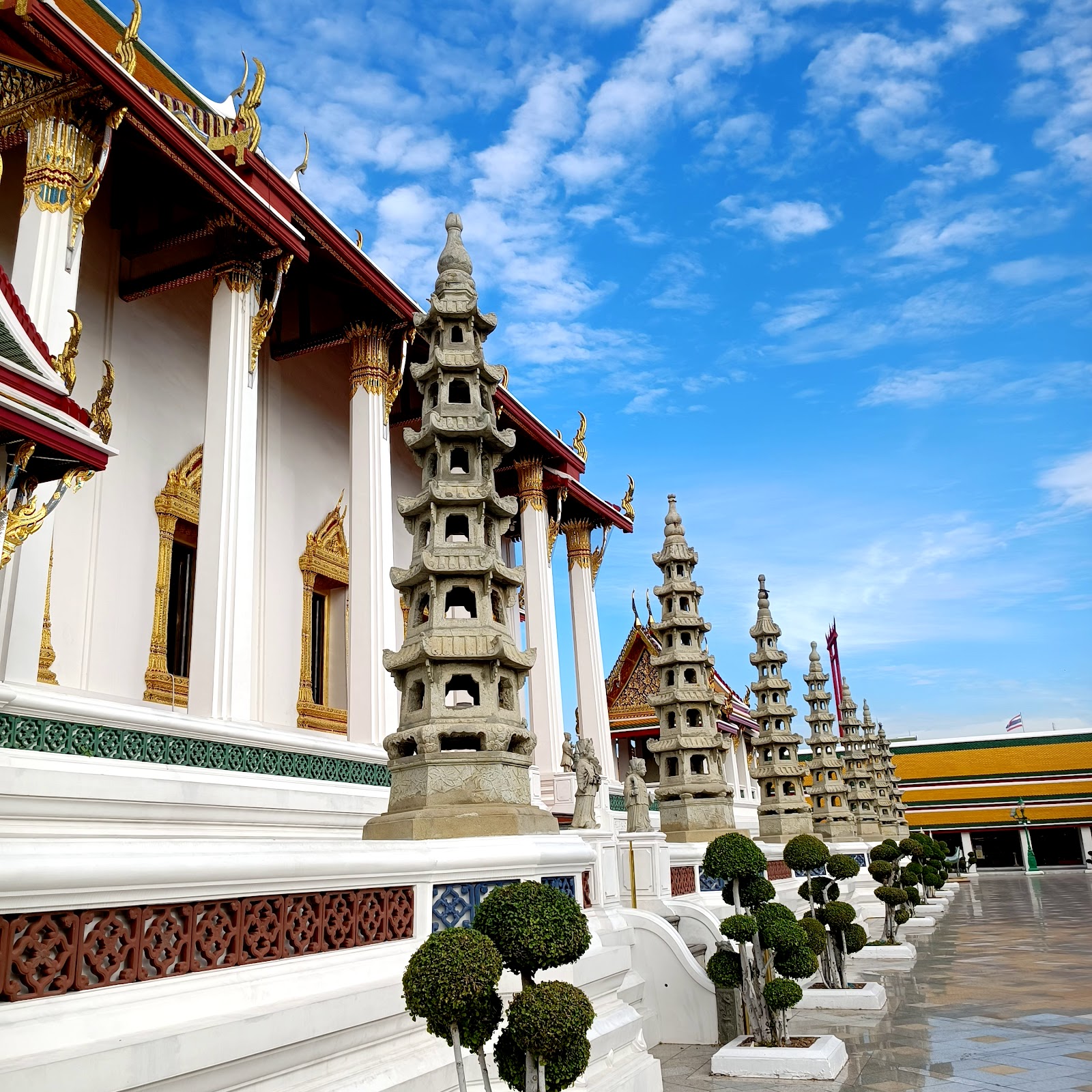
Wat Suthat (Source: Google Maps)
Wat Suthat is famous for its stunning frescoes that adorn the walls of the temple, depicting scenes from Buddhist mythology and the life of the Buddha. Built during the reign of King Rama I, it features a striking red and gold color scheme that enhances its majestic appearance. One of the temple's most iconic features is the Giant Swing, a towering structure that was once used in a traditional Brahmin ceremony to honor the Hindu god Shiva. The temple's intricate architecture and artistic details reflect the craftsmanship of the era. Wat Suthat serves as a vital cultural site in Bangkok, attracting visitors eager to explore its historical and spiritual significance.
Democracy Monument
Walk to the Democracy Monument, a significant symbol commemorating the 1932 Siamese Revolution, located on the bustling Ratchadamnoen Avenue.
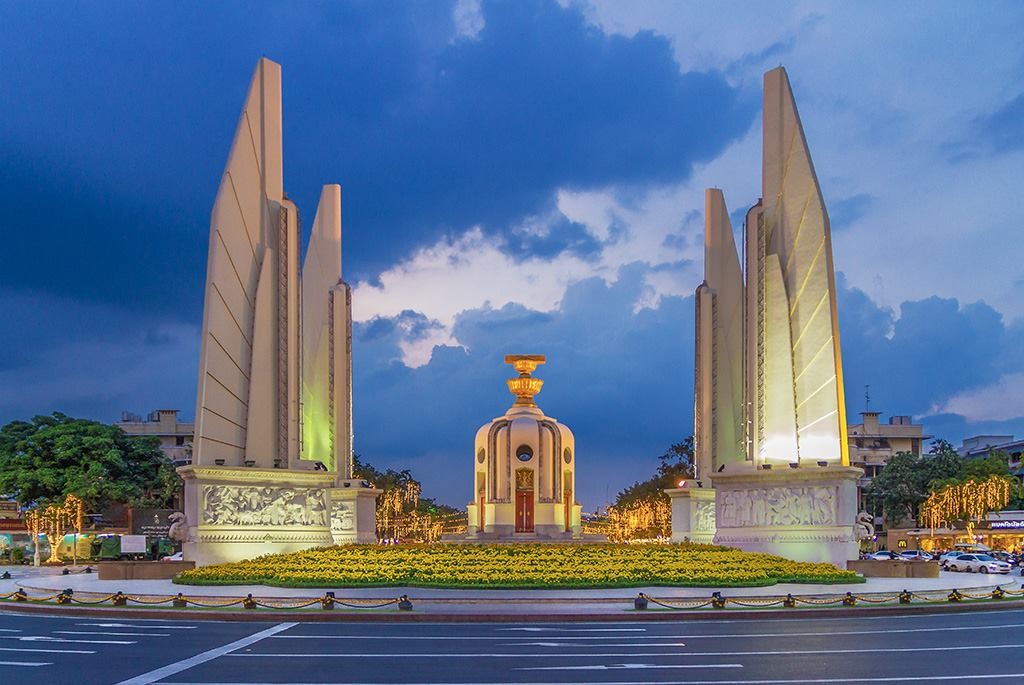
Democracy Monument (Source: Google Maps)
The Democracy Monument is a significant landmark in Bangkok, commemorating the 1932 Siamese Revolution that transformed Thailand from an absolute monarchy to a constitutional monarchy. Erected in 1939, the monument features a striking design that includes a central pillar symbolizing the constitution and four wings representing the military, the people, the government, and the monarchy. It stands at the intersection of Ratchadamnoen Avenue, serving as a reminder of Thailand's journey towards democracy. The monument is often a gathering place for political demonstrations and public events, reflecting its ongoing relevance in Thai society and politics.
Loha Prasat (Metal Castle)
Conclude your tour at Loha Prasat, a unique multi-tiered structure with a striking iron spire, offering panoramic views of the city from the top.
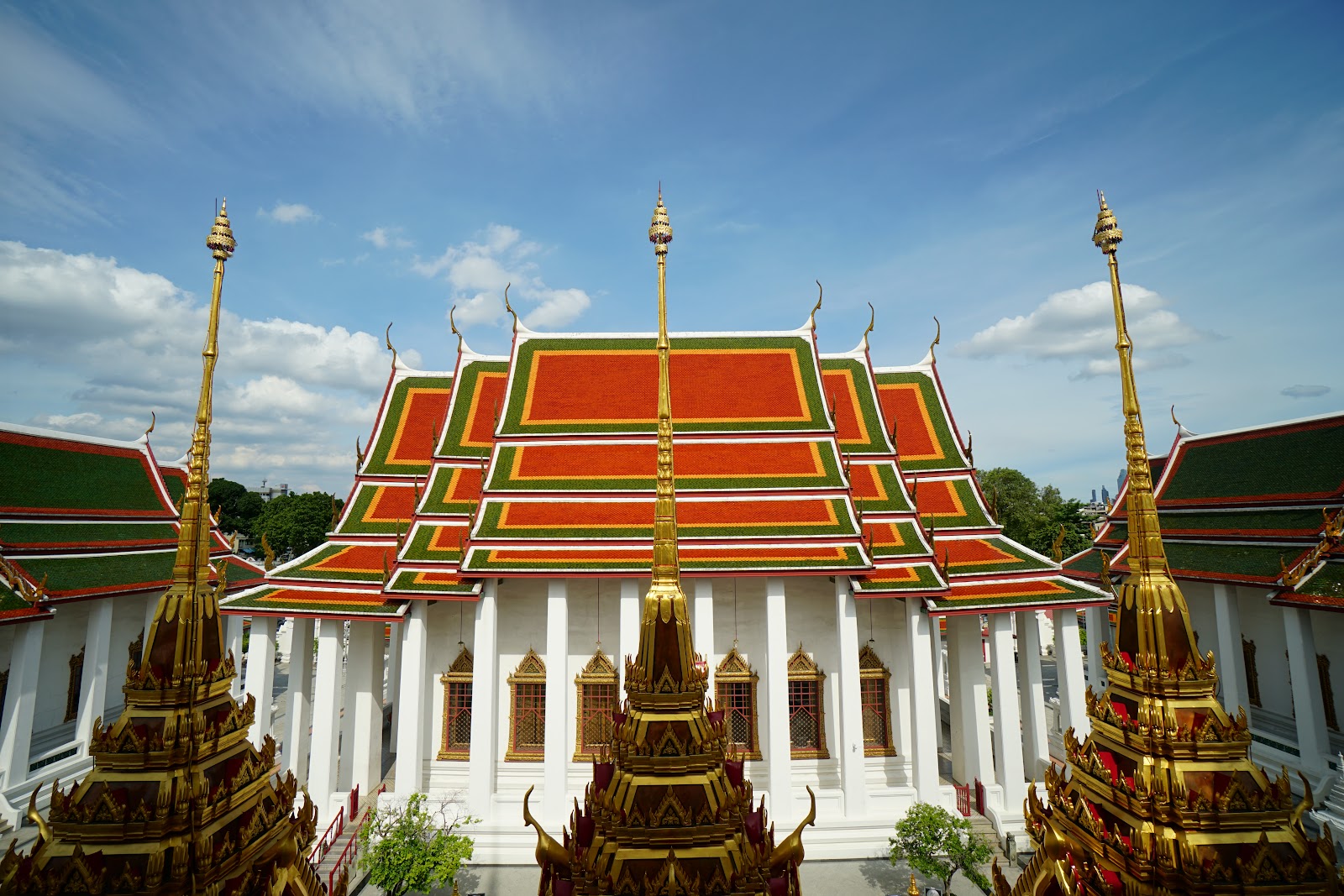
Loha Prasat (Metal Castle) (Source: Google Maps)
Loha Prasat, also known as the Metal Castle, is a unique multi-tiered structure that stands out in Bangkok's skyline with its striking iron spire. Built in the mid-19th century under King Rama IV, this architectural marvel is the only metal temple in the world and is inspired by ancient Indian architecture. The temple features 37 spires, symbolizing the 37 virtues toward enlightenment in Buddhism. Visitors can explore its serene gardens and enjoy panoramic views of the city from the upper levels. Loha Prasat is recognized as a UNESCO World Heritage site, highlighting its cultural significance and architectural innovation, making it a must-visit landmark for those interested in Thailand's rich heritage.

Your travels, your rules.
Create your own Free Walking Tours.
Set your preferences, distances and anything you want to do or see.
Completely free, no payment required.